How The Navy Got Its P-8A Poseidon Out Of The Water In Hawaii
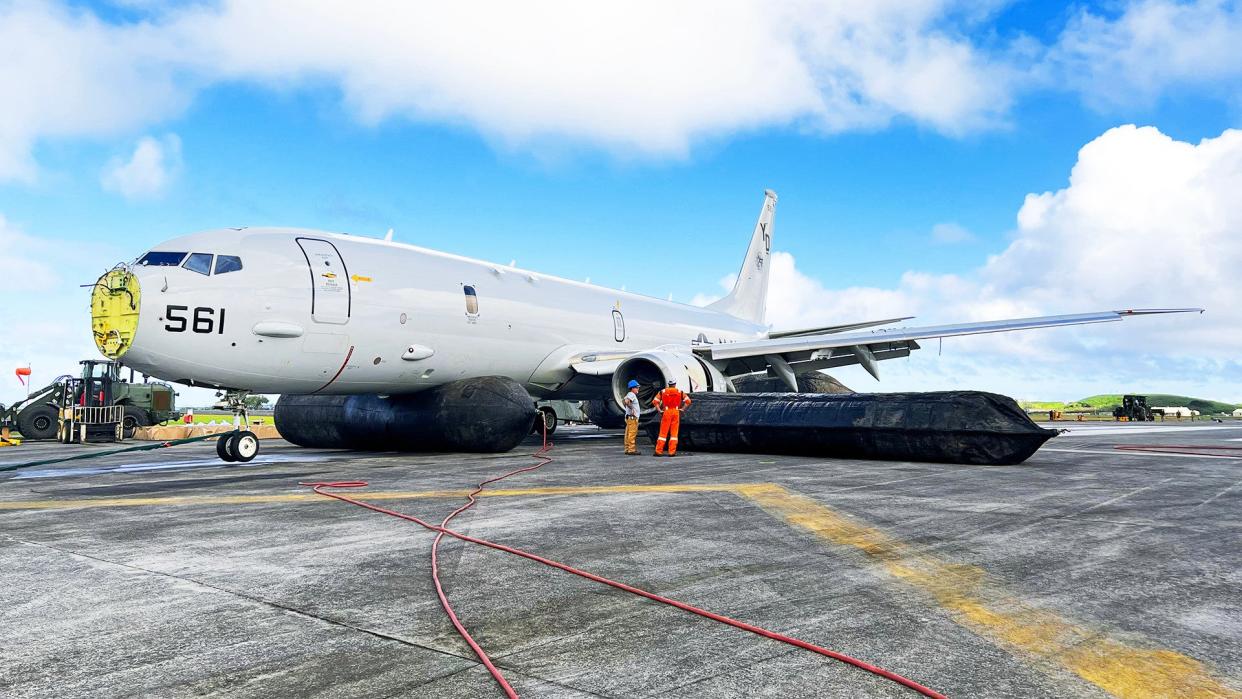
The U.S. Navy P-8A Poseidon maritime patrol plane that ended up in Hawaii's Kaneohe Bay on November 20 is finally out of the water. The plane was floated from where it had come to rest using inflatable airbags and then slowly rolled – sometimes at a pace of just five feet per hour – across those bags back onto the runway. Much of the aircraft remains intact, including its landing gear, and the Navy is hopeful that it can return to service after what are expected to be significant repairs.
U.S. Navy and Marine Corps officials provided an update on the status of the P-8A at a press conference earlier today. The jet, which belongs to the Navy's Patrol Squadron Four (VP-4) based at Naval Air Station Whidbey Island in Washington State, ran off the runway at Marine Corps Air Station Kaneohe Bay last month. The installation is part of Marine Corps Base Hawaii. The aircraft was returning from a routine training mission at the time. The circumstances surrounding the mishap remain under investigation.
https://www.youtube.com/watch?v=JXe_B19A75w
Work has been ongoing since the incident occurred to assess the state of the P-8A and mitigate impacts to the local environment, including coral that was damaged when the jet entered the water. After overshooting the runway, the aircraft continued for a short distance and pivoted to the left before coming to a stop.
The actual process of getting the plane off the coral below and back onto the runway, which private contractors also supported, began last Thursday when the necessary equipment first began arriving. Preparations to move the aircraft were underway by Friday and then, on Saturday morning, the jet was successfully raised using airbags.
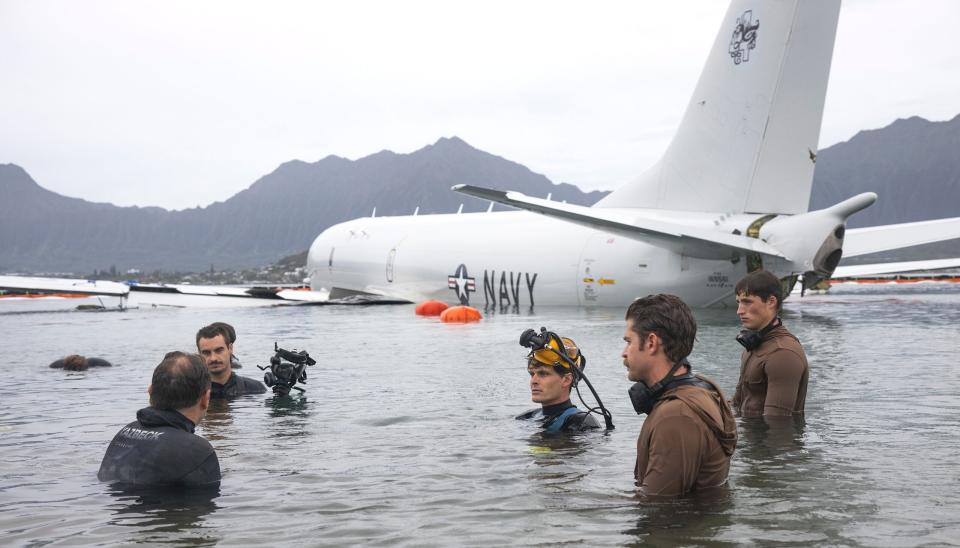
The retrieval effort then involved rolling the aircraft along a row of airbags, first back into alignment with the runway and then into position to get it back ashore, as can be seen in the graphic shown at the process conference below.
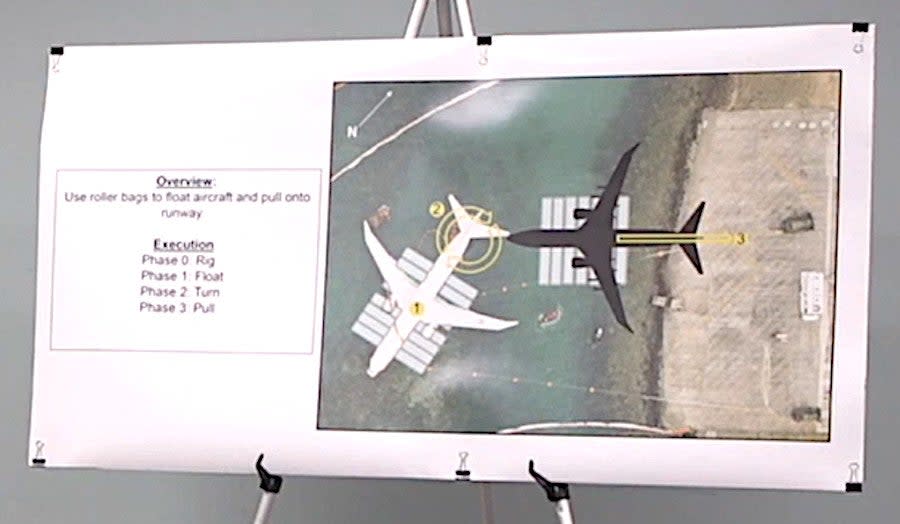
"It took about the next seven hours to move in these next 100 feet, because we started at high tide, the water was going down as the tide was going out, so it was getting a little shallow in here," Navy Rear Adm. Kevin Lenox, the assigned incident commander, explained today about the initial movement after the jet was floated. "The team spent a lot of time – we had those float bags that I described to you, different sizes those float bags, three-meter bags, two-meter bags, different pressures on those, and we use this to make minute adjustments of the aircraft."
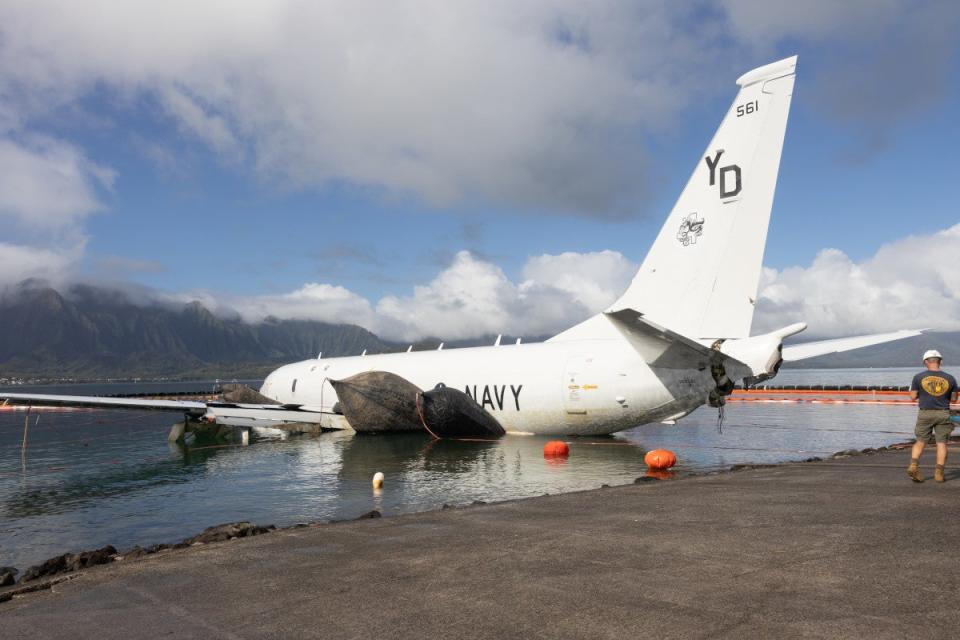
Divers were in the water the entire time to observe the aircraft's progress from below, including whether the landing gear was in danger of hitting more coral or other obstacles. In addition to recovering the jet, limiting the extent of any environmental impacts from the mishap has been a major focus for the Navy and the Marines.
"At times, it was taking us about an hour to maneuver the aircraft, get it specifically in position, to pull it maybe five feet," Lenox added.
By the time a decision was made to stop work on Saturday, the aircraft's main landing gear was back on the runway, but its nose gear was still in the water. The jet was pulled completely out of the water after several hours more work yesterday.
"This company [that helped with the salvage and recovery effort] said ... they've moved a lot of stuff with these roller bags, [but] this was the first time they pulled an aircraft out of water with roller bags," according to Lenox.

"Right now it is sitting on the 'piano keys' at the end of the runway," the Navy's incident commander said today, referring to the white stripes painted at the end of the runway to mark its threshold.
The P-8A was initially lowered onto jacks as a precaution, but its landing gear was subsequently determined to be structurally sound.
"We're going to tow it over to a wash rack here at the south end of the airfield. We'll go ahead and rinse all the saltwater off the bottom of it. ... And then, finally, we'll tow it over to its final parking spot," Rear Adm. Lenox said at today's press conference. The "investigation Team will take control of it and will continue their investigation. ... Additionally, Maritime Patrol Wing 10 [sic; Patrol and Reconnaissance Wing 10] will take control the aircraft, and they will begin what is expected to be a fairly extensive salvage and remediation process on that aircraft."
The Navy, together with the Marine Corps, are also helping authorities in Hawaii assess the full extent of the impacts to local fauna (especially coral) and flora from the accident. The P-8A was defueled while it was in the water, and the Navy and Marine Corps say they have not detected any subsequent leaks of fuel or other contaminants as part of the recovery process.
The Navy is hopeful that the P-8A will be able to eventually return to service, but the full extent of the damage to the jet remains unclear. Salt water, which the jet was sitting in for around two weeks, can cause serious damage through corrosion. The aircraft's engines were largely submerged the entire time, which could have led to major damage to fan blades and other internal components. The underside of the Poseidon is also lined with antennas and apertures, and it is unclear how much water may have seeped into the weapons bay or other spaces inside the aircraft. The jet's nose cone, and the radar behind it, are also missing and it is not clear what the condition of those components might be now.
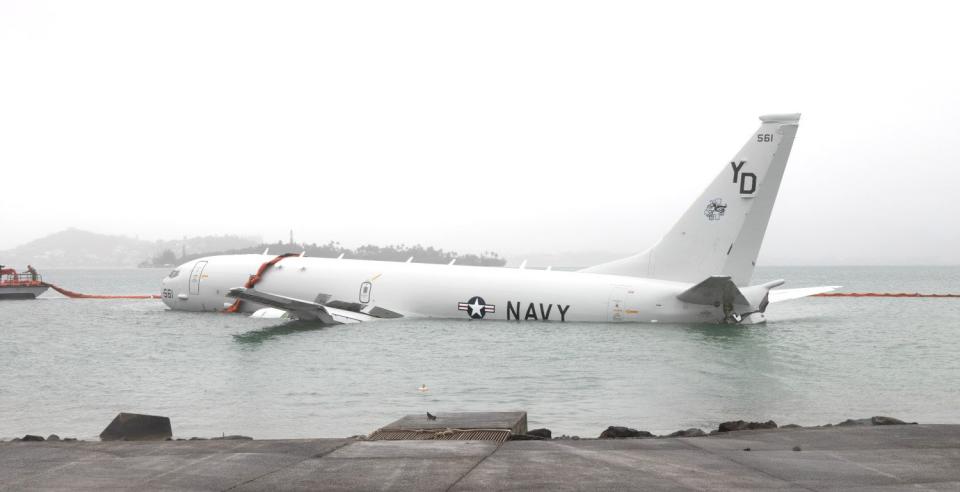
There is clearly an interest on the part of the Navy in making this P-8A operational again. Each one of these jets, which are based on the Boeing 737 Next Generation airliner, costs just over $171 million, according to Navy budget documents. So repairing even a seriously damaged example could be cheaper than buying a brand-new one. This is the first major mishap one of the Navy's P-8As has suffered since the type first entered service in 2013. The service intends to acquire a fleet of 128 of these aircraft, which will supplant the P-3 Orion maritime patrol plane and related types, such as the EP-3E Aries II intelligence, surveillance, and reconnaissance aircraft.
Though typically described as a maritime patrol or anti-submarine warfare plane, the P-8A is actually a very capable multi-mission aircraft with extensive intelligence, surveillance, and reconnaissance capabilities. The abilties these aircraft offer are in high demand now, especially to help monitor Chinese maritime activity across the Pacific. The need for Posiedons has also become more pronounced due to growing fears about advanced Russian submarines and other naval movements, in the Atlantic and the Pacific, as well as the Arctic, in recent years. Russian and Chinese navy deployments in and around the Arctic, now sometimes together, have raised additional concerns.
Whatever the case, some two weeks after the P-8A from VP-4 ended up in Kaneohe Bay, the aircraft has now been successfully recovered after a slow and exacting process.
Contact the author: joe@thedrive.com

